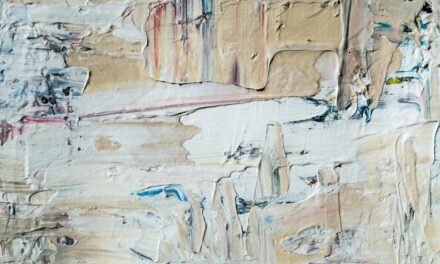The world of art is a vibrant tapestry woven from the threads of colour, emotion, and nature. Among the myriad ways artists express their creativity, seasonal colour palettes stand out as a profound reflection of the changing environment. Each season brings with it a unique set of colours that not only define the landscape but also evoke specific feelings and moods.
By understanding and utilising these seasonal palettes, artists can create works that resonate deeply with viewers, capturing the essence of nature’s cyclical beauty. As the seasons shift, so too do the colours that dominate our surroundings. From the delicate pastels of spring to the deep, rich tones of autumn, each season offers a distinct palette that can inspire and inform artistic expression.
This article delves into the influence of nature on art, exploring how artists can harness the colours of each season to enhance their work and connect with the natural world. By examining the characteristics of spring, summer, autumn, and winter palettes, we can appreciate how these hues not only reflect the environment but also evoke emotional responses that enrich our understanding of art.
Summary
- Seasonal color palettes are inspired by the changing hues of nature throughout the year.
- Nature has a significant influence on art, with artists often drawing inspiration from the colours and moods of each season.
- Spring color palettes are characterized by vibrant and fresh hues, reflecting the renewal and growth of the season.
- Summer color palettes feature warm and bright tones, capturing the energy and warmth of the sun.
- Autumn color palettes utilise earthy and rich shades, mirroring the changing foliage and harvest season.
Understanding the Influence of Nature on Art
Nature has long been a muse for artists throughout history, serving as both a subject and a source of inspiration. The interplay between the natural world and artistic expression is evident in countless works, from the Impressionists’ celebration of light and colour to the Romanticists’ dramatic landscapes. The colours found in nature are not merely aesthetic choices; they carry with them cultural significance and emotional weight.
Artists often draw upon these hues to convey specific themes or feelings, creating a dialogue between their work and the viewer’s experience. The changing seasons provide a dynamic backdrop for this exploration of colour. Each season presents a unique set of environmental conditions that influence not only the colours we see but also how we perceive them.
For instance, the bright greens and blooming florals of spring evoke feelings of renewal and hope, while the muted tones of winter can inspire introspection and calm. By understanding these seasonal influences, artists can create works that resonate on a deeper level, inviting viewers to engage with both the artwork and the natural world it reflects.
Spring Color Palettes: Embracing Vibrant and Fresh Hues
Spring heralds a time of renewal and growth, characterised by an explosion of colour as nature awakens from its winter slumber. The palette of spring is often dominated by vibrant greens, soft pastels, and lively floral hues. Artists can draw inspiration from the delicate blossoms that dot the landscape, incorporating shades of pink, lavender, and yellow into their work.
These colours not only reflect the beauty of spring but also evoke feelings of joy and optimism. Incorporating spring colours into artwork can be achieved through various techniques. For instance, watercolour painting allows for soft blending and layering, perfect for capturing the ethereal quality of spring blooms.
Artists might experiment with techniques such as wet-on-wet to create fluid transitions between colours, mimicking the gentle flow of new life emerging from the earth. Additionally, using bright greens can evoke a sense of vitality and freshness, reminding viewers of the energy that accompanies this season of growth.
Summer Color Palettes: Exploring Warm and Bright Tones
As spring gives way to summer, the colour palette shifts to embrace warmer and more vibrant tones. Summer is often associated with bright yellows, deep blues, and lush greens that reflect the sun-drenched landscapes and vibrant flora of the season. Artists can harness these bold colours to create works that exude warmth and energy, inviting viewers to bask in the joy of summer days.
The use of colour in summer artworks can be particularly striking when combined with strong contrasts. For example, pairing bright yellows with deep blues can create a dynamic visual impact that captures the essence of a sunlit sky against a shimmering sea. Techniques such as impasto—where paint is applied thickly to create texture—can further enhance this vibrancy, allowing artists to convey the heat and intensity of summer.
By embracing these warm tones, artists can evoke feelings of happiness and freedom, transporting viewers to sun-soaked landscapes filled with life.
Autumn Color Palettes: Utilizing Earthy and Rich Shades
As summer fades into autumn, nature undergoes a dramatic transformation, presenting a rich tapestry of earthy tones. The autumn palette is characterised by deep reds, burnt oranges, golden yellows, and browns that reflect the changing leaves and harvest season. These colours evoke a sense of warmth and nostalgia, making them ideal for artists seeking to capture the essence of this transitional period.
Incorporating autumn colours into artwork can be achieved through various mediums and techniques. For instance, oil painting allows for rich layering and blending, perfect for creating depth in autumn landscapes. Artists might focus on capturing the intricate details of fallen leaves or the warm glow of sunset against a backdrop of trees in full colour.
Additionally, using textured surfaces can enhance the tactile quality of autumn scenes, inviting viewers to engage with the artwork on multiple levels.
Winter Color Palettes: Embracing Cool and Moody Colours
Winter brings with it a stark contrast to the vibrant hues of previous seasons, introducing a palette dominated by cool tones and muted shades. The winter landscape is often characterised by icy blues, soft greys, and deep greens that evoke a sense of calm and introspection. Artists can draw upon these colours to create works that reflect the stillness and serenity of winter.
The use of cool colours in winter artworks can convey a range of emotions, from solitude to contemplation. Techniques such as glazing—where thin layers of transparent paint are applied—can create a sense of depth and atmosphere in winter scenes. Artists might focus on capturing the delicate interplay between light and shadow in snowy landscapes or explore the stark beauty of bare trees against a grey sky.
By embracing these moody colours, artists can invite viewers to experience the quiet beauty of winter while evoking feelings of peace and reflection.
Adapting to Nature’s Changes: How Artists Incorporate Seasonal Color Palettes
Artists have long been attuned to the rhythms of nature, adapting their work to reflect seasonal changes in colour and mood. This adaptability is not merely a technical choice; it is an integral part of an artist’s creative process. By observing how nature transforms throughout the year, artists can find inspiration in its ever-changing beauty, allowing them to create works that resonate with both personal experience and universal themes.
Incorporating seasonal colour palettes into artwork requires a keen awareness of one’s surroundings. Artists might take regular excursions into nature during different seasons, observing how light interacts with colour at various times of day or how weather conditions affect their perception of hues. This practice not only enhances their understanding of colour theory but also deepens their connection to the natural world.
By embracing these seasonal changes in their work, artists can create pieces that celebrate nature’s beauty while inviting viewers to reflect on their own experiences within it.
Celebrating the Beauty of Nature Through Artistic Expression
In conclusion, seasonal colour palettes offer artists a powerful means to connect with nature while expressing their creativity. By understanding how each season influences colour choices—from the vibrant hues of spring to the cool tones of winter—artists can create works that resonate deeply with viewers. These palettes not only reflect the beauty of our environment but also evoke emotions that enrich our experience of art.
As we celebrate the changing seasons through artistic expression, we are reminded of our own connection to nature and its cyclical rhythms. The colours we encounter in our surroundings serve as a source of inspiration and reflection, inviting us to engage with both art and nature on a profound level.
Seasonal Color Palettes in Art: Adapting to Nature’s Changes explores how artists use different hues to reflect the changing seasons. This article delves into the significance of incorporating nature’s colours into artwork and how it can evoke emotions in viewers. For further inspiration on how to use shades effectively in art, check out Shades of Inspiration. This article provides valuable insights into the power of colour in artistic expression and offers practical tips for artists looking to enhance their work.


